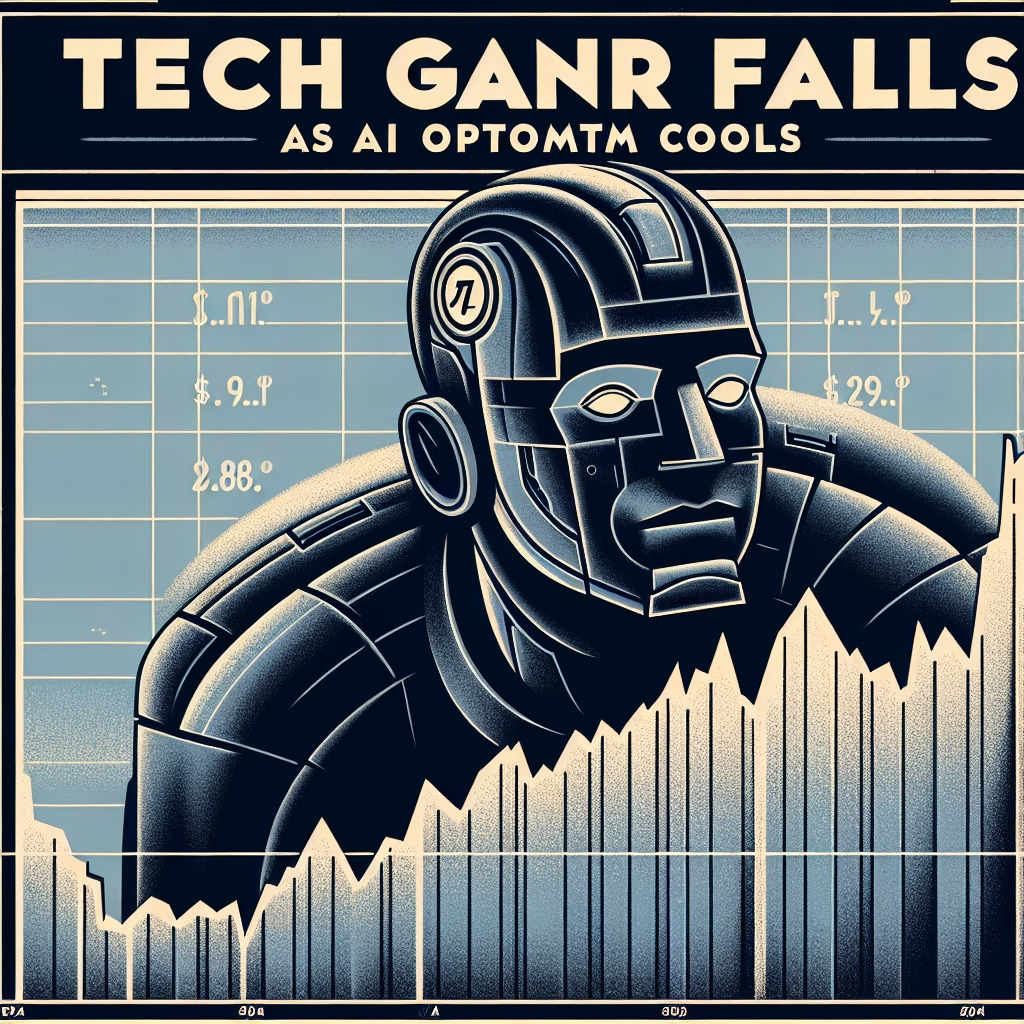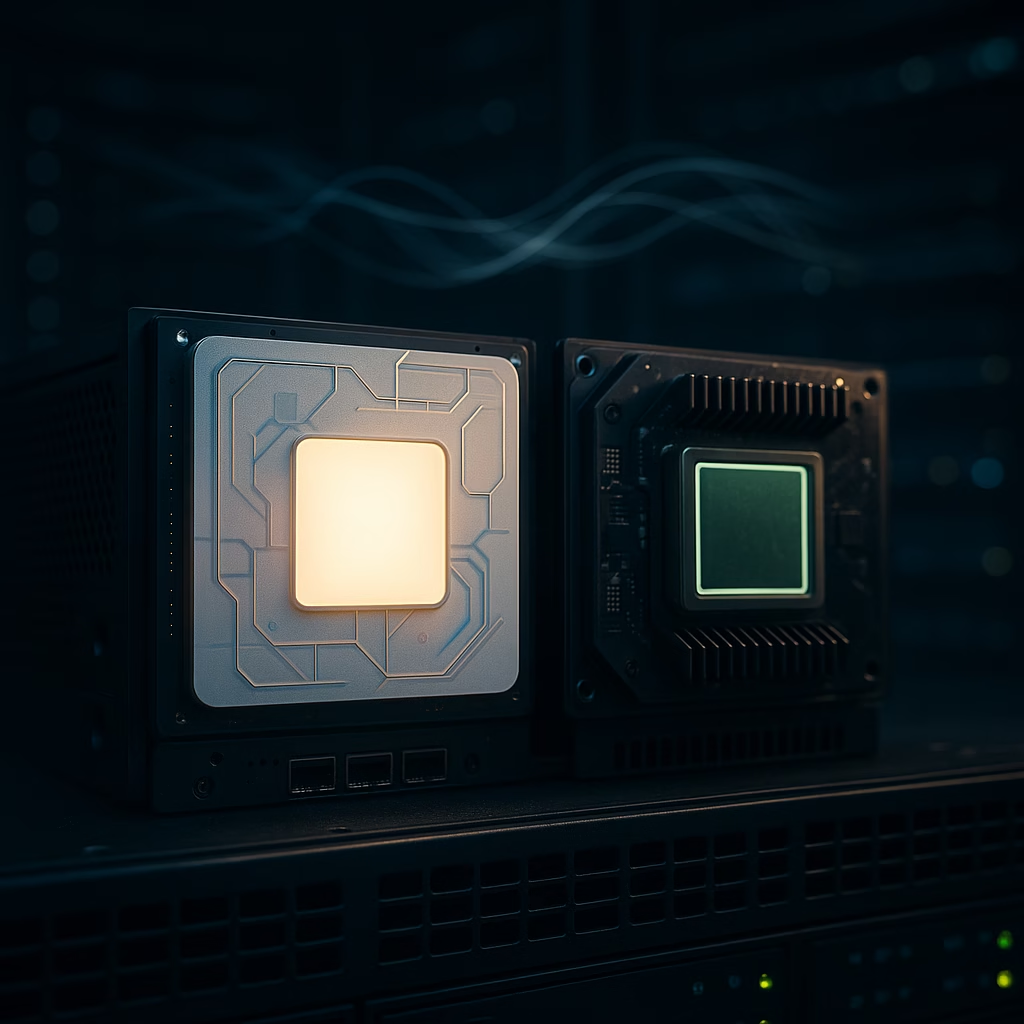# **Nvidia Falls as AI Optimism Cools: What It Means for Investors**
Artificial intelligence (AI) has been the driving force behind Nvidia’s massive stock rally in recent years. However, as investor enthusiasm cools, Nvidia’s stock is facing a downturn. Is this a temporary dip or a sign of something bigger?
In this article, we’ll analyze the reasons behind the recent decline in Nvidia’s stock, its impact on investors, and what the future holds for this AI-driven powerhouse.
## **Why Is Nvidia’s Stock Falling?**
Nvidia (NASDAQ: NVDA) has been one of the hottest stocks in recent years, fueled by its dominance in AI chips and data centers. However, the company’s stock recently took a hit as investors began tempering their expectations. Here’s why:
### **1. Market Correction After an Explosive Rally**
Nvidia has seen extraordinary gains, with its stock soaring over 200% in 2023 alone. However, no stock climbs indefinitely. The recent dip is likely due to a much-needed market correction as investors reap profits from previous gains.
### **2. AI Hype Losing Some Momentum**
While AI continues to revolutionize industries, the initial excitement surrounding the technology is fading. Investors are now focusing on real-world adoption and profitability rather than just hype.
### **3. Valuation Concerns**
Some analysts believe Nvidia’s valuation had become overheated, with the stock trading at a high price-to-earnings (P/E) ratio. As a result, investors may be reconsidering whether the stock is still worth its hefty price tag.
### **4. Broader Market Trends**
The tech sector as a whole has experienced volatility, with macroeconomic uncertainty, interest rate decisions, and geopolitical tensions playing a role. Nvidia is not immune to these broader market factors.
## **Impact on Nvidia’s Business and Future Growth**
Despite the stock pullback, Nvidia remains a dominant player in the AI and semiconductor industries. Let’s explore the company’s key business areas and whether investors should be concerned.
### **1. AI and Data Center Growth**
Nvidia remains the undisputed leader in AI chips, with its GPUs powering massive data centers for companies like Microsoft, Amazon, and Google. Even though AI enthusiasm has cooled, demand for Nvidia’s chips remains strong.
### **2. Gaming and Consumer Market**
The gaming industry continues to be a significant revenue driver for Nvidia. With new gaming technologies and increasing demand for high-performance GPUs, Nvidia’s gaming segment remains resilient.
### **3. Competition from Rivals**
While Nvidia has a solid grip on the AI market, competition is heating up from companies like AMD and Intel. Additionally, tech giants such as Microsoft and Google are developing their own AI chips, which could pose a long-term challenge to Nvidia’s dominance.
### **4. Strong Financial Performance**
Despite short-term stock fluctuations, Nvidia continues to deliver impressive revenue growth, especially in AI-related sectors. The company’s fundamentals remain strong, which suggests that its long-term prospects are still promising.
## **Should You Buy, Hold, or Sell Nvidia Stock?**
If you’re an investor wondering what to do with Nvidia stock, here are some key considerations:
### **1. Long-Term Growth Potential**
Nvidia is a long-term leader in AI, gaming, and data centers. While short-term pullbacks may occur, the company is well-positioned for future expansion.
### **2. Valuation Check**
With the stock pulling back, investors may consider whether it’s entering a more attractive buying range. Monitoring Nvidia’s valuation metrics will be crucial before making any investment decisions.
### **3. Risk Factors to Watch**
– **Increased competition** from AMD, Intel, and other AI chip makers
– **Macroeconomic conditions**, including inflation and interest rate policies
– **AI adoption trends**, as real-world implementation becomes more critical
### **4. Dollar-Cost Averaging Strategy**
For long-term investors, a dollar-cost averaging (DCA) strategy may be the best approach. This means buying Nvidia stock in smaller increments over time, rather than making a large investment at once.
## **Conclusion: A Temporary Dip or a Deeper Concern?**
While Nvidia’s recent stock decline may be unsettling for some investors, it is essential to differentiate between short-term volatility and long-term value.
– **The AI boom is not over**, but investor sentiment is shifting toward fundamental growth rather than pure hype.
– **Nvidia’s business remains strong**, with continued dominance in AI, data centers, and gaming.
– **Investors should remain strategic** by assessing valuation, competition, and macroeconomic factors.
For those with a long-term perspective, Nvidia’s recent dip could present a buying opportunity rather than a reason to panic. However, investors should stay informed and cautiously optimistic as the AI industry continues to evolve.< lang="en">







Leave a Reply